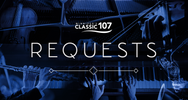Chris Wolf, a former music teacher for the Royal Winnipeg Ballet, used to play this for his students. "They loved it! I would play it on the speakers. It was wonderful exposing them to Copland as a ballet composer. For the most part, these young students only thought of Tchaikovsky or Minkus as composers for ballet. Add the old west to that and they were instantly hooked!"
Premiered in 1942, Rodeo is a ballet scored by Aaron Copland and choreographed by the legendary Agnes de Mille. It was subtitled "The Courting at Burnt Ranch".
The original ballet was choreographed by Agnes de Mille for the Ballet Russe de Monte Carlo, a dance company that moved to the United States during World War II. In order to compete with the rival company Ballet Theatre, the Ballet Russe commissioned the American choreographer out of a career of relative obscurity. De Mille was given considerable creative control, choosing Aaron Copland as the composer after being impressed by his previous ballet, Billy the Kid. Though Copland was initially reluctant to compose "another Cowboy ballet," De Mille successfully persuaded him that this show would mark a significant departure from his previous work.
The ballet consists of five sections: "Buckaroo Holiday", "Ranch House Party", "Corral Nocturne", "Saturday Night Waltz", and "Hoe-Down". The symphonic version, however, omits "Ranch House Party".
The circumstances surrounding the composition of Rodeo led to its having a number of features that set it apart from other Copland compositions. Though many of Copland's works incorporate traditional American folk tunes, Rodeo is unique in that it leaves them quite intact in the score, with very little alteration on the part of the composer. This is likely attributable in part to De Mille's control over the work. Indeed, she had already blocked the entire show before Copland had written a single note and also transcribed several folk tunes, including "Old Paint", for Copland in addition to her blocking notes.
The well-known main theme of "Hoe-Down" is based on a unique version of the American folk song "Bonyparte" or "Bonaparte's Retreat," played by Salyersville, Kentucky fiddler William Hamilton Stepp, which was recorded in 1937 by Alan Lomax for the Library of Congress. A meticulous transcription by Ruth Crawford Seeger of that performance appeared in Lomax's 1941 book, "Our Singing Country".
Many of the themes were autobiographical for De Mille. An extremely skilled dancer, the choreographer nonetheless felt awkward in the offstage world, and the Cowgirl's unwillingness to subscribe to traditional gender roles mirrors De Mille's experience.
Watch this great video of the American Ballet Theatre's 1973 performance of the opening scene of Rodeo. An interview with Agnes De Mille follows as will as clips of the dancers.
De Mille herself played the lead, and the premiere at the Metropolitan Opera House on 16 October 1942 received 22 curtain calls. The other principal dancers in the cast included Frederic Franklin and Casimir Kokitch. Though de Mille herself was not entirely pleased with the premiere, it was attended by Rodgers and Hammerstein, who approached de Mille afterward to request that she choreograph their upcoming production of Oklahoma!.
Copland arranged the music as a symphonic suite for orchestra titled Four Dance Episodes from Rodeo, which consisted chiefly of removing "Ranch House Party" and minor adjustments to the final two sections. With the middle section removed, the composition resembled the symphonic form with an ambitious opening movement, slow movement, minuet and finale. In this form, Rodeo found even greater success, premiering at the Boston Pops in 1943.








